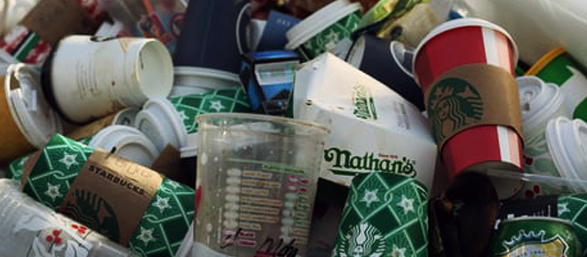

How IoT Could Save Our Cities from Waste.
The global population is rising. Our cities are getting bigger. And by 2050 the world is expected to have four billion tonnes of waste to dispose of.
While it’s clear that our current waste collection methods and infrastructure won’t be able to cope, it’s not all doom and gloom. To keep our cities clean and deal with this waste responsibly we just need to start adopting smarter ways of collecting waste.
The good news is that this technology already exists. Innovative waste management companies have harnessed the power of the internet of things (IOT) to make cities’ waste collection more efficient, cost-effective and environmentally friendly.
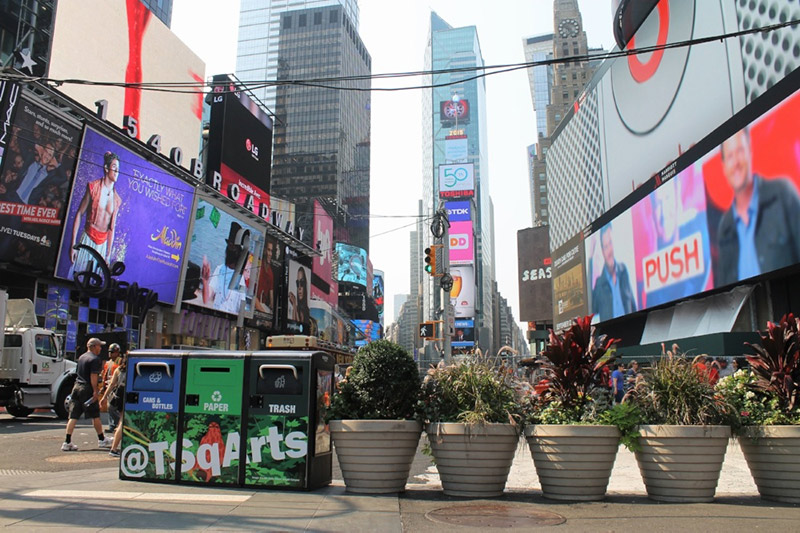
Times Square recycling initiative
Back in 2013, IOT played a lead role in New York City’s largest public space recycling initiative.
For this, 30 Bigbelly smart waste and recycling stations were deployed in Times Square. Each unit was equipped with waste compaction capabilities, real-time fill level monitoring and collection notifications. Working together, this technology increased the total trash capacity by nearly 200% and decreased the frequency of collection per bin decreased by 50%.
This program was a huge success and an insight into the advantages of IOT systems over traditional waste collection.
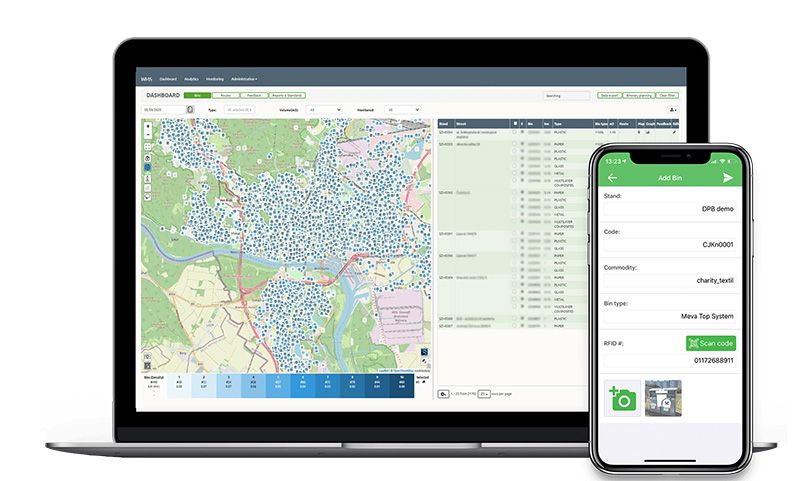
Sensoneo's technology
In 2021, we now have a number of innovative leaders in the waste collection space.
Sensoneo is redefining the way we collect waste through innovations in asset management, waste monitoring and route planning. This has been proven to reduce waste collection costs by at least 30% and lower carbon emissions in cities up to 60% (which is attractive for governments that’ve agreed to go carbon neutral by 2030).
The Sensoneo asset management solution helps create a digital bin infrastructure using RFID tags and stickers, a smart waste management system, mobile app and RFID readers. This simplifies bin/container tracking, communication and invoicing - providing a clear and accurate overview of bins (assets) within a system.
The digital bin infrastructure then allows the Sensoneo waste monitoring solution to do its thing and start improving efficiencies.
Smart sensors with ultrasound technology measure how full the system’s bins/containers are. Then the data is sent to the smart waste management system via IOT (Sigfox, NB-IoT, LoRaWAN, GPRS), which helps operators make data-driven decisions about waste collection frequencies, vehicle loads and bin distribution.
The company also provides a route planning app, which optimises and automates the planning of waste collection routes. This helps with making the most of city resources (fleet, FTEs, time), while cutting down on carbon emissions and costs.
All this technology is very cool and is sure to help governments achieve their European Green Deal targets. It’s no surprise that Sensoneo have recently been awarded with a EIC Accelerator grant and received €3 million worth of investment from the European Innovation Council Equity Fund.
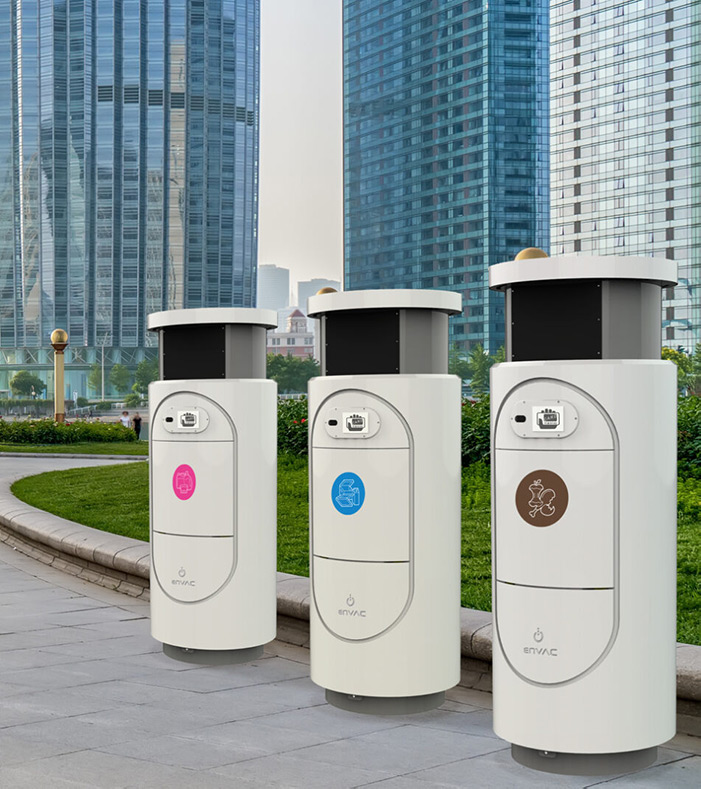
Envac's system
However, Sensoneo isn’t the only company that’s providing IOT solutions and changing the waste collection landscape.
The Swedish company, Envac, provides cities with pneumatic trash systems made up by a collection of underground pipes.
Powerful fans suck the waste along the pipes at speeds up to 60 miles per hour until it reaches a collection facility. Then the bags drop into the waiting bed of a rubbish truck, which hauls them off to their final destination.
This means that trucks only take one trip from the collection point to the dump or recycling facility, rather than collecting waste from all around its dedicated neighbourhood. Envac claims this efficiency can curb truck emissions by as much as 90%.
The system is smart and always looking for ways to improve the benefits it provides. For example, sensors in the system collect data which feeds into a machine-learning software, which continuously looks to optimise the system to reduce its environmental impact and cost.
Already, there are over 100 Envac systems in Stockholm serving about 120,000 households. Food waste goes down one chute, destined for a facility that turns it into biofuel. Recyclables go down another. And the third is for mixed waste that winds up in an incinerator.
You can read more about more about innovations in waste-to-energy in my recent article: “Waste-to-Energy Solves So Many Problems.”
While this is impressive, no other city has embraced vacuum waste systems more enthusiastically than Bergen in Norway.
Authorities are installing Envac pipes to serve every home and business in town. The new infrastructure has allowed the city to implement a ‘pay as you throw’ tax scheme, which charges residents based on the amount of waste they generate.
To open the vacuum chutes in Bergen, residents must swipe a key fob registered to their household, which allows local authorities to record data on how much rubbish they’re throwing away. Residents can only open the chute for non-recyclables five times a month before an extra tax kicks in. After that, they pay a small fee every time they dispose of their waste.
In areas where the chutes are installed, Bergen reports that plastic recycling has risen 29% and non-recyclable waste volumes have fallen 8%. It’s also estimated that the city is saving $2 million per year in waste collection costs.
Statistics like this are crucial because cost has long been a barrier for widespread adoption of these IOT systems. However, if more cities like Bergen can continue to prove their value, then there’s reason to be optimistic about the future of waste collection.
For now, the costs associated with implementing these systems does limit them to high-income cities. But considering that its these cities produce a third of the world's waste (despite having only 16% of world's population), this seems a good place to start.
We have a long way to go if we’re going to provide waste collection of the scale we’re predicted to need by 2050. However, I take comfort in the fact that the technology we need already exists. I’m excited to see what the future holds for our major cities, as more become empowered by IOT innovations in waste collection. Not only will this help our cities become cleaner, but also more environmentally friendly and sustainable.
If you’d like to have a chat about this topic or are interested in a future collaboration with me, please get in touch. I’m always looking to grow my network and speak to interesting people within waste management. My email is Bilal.Ahmed@industrial-cm.com.
For more content like this, check out my profile page.
Recommended.
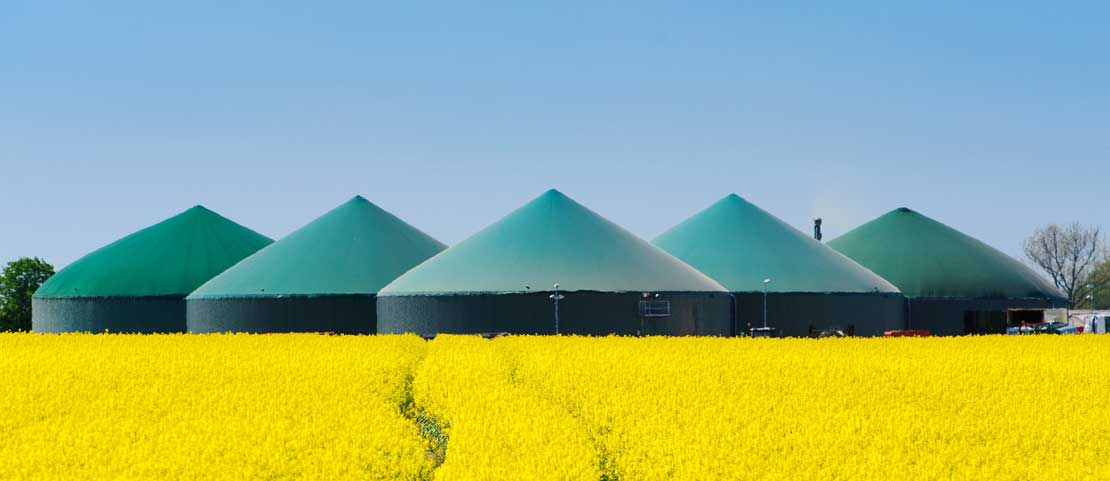
Revolutionising the Future for Biogas.
The World Biogas Summit & Expo 2023 shared a wealth of industry knowledge, innovation, and inspiring new ideas to help #MakeBiogasHappen. We discuss the key takeaways from the event and what this means for our industry.
.png)
Overcoming Challenges in Automation of Solar O&M.
Automation is increasing efficiency in solar O&M spaces to great effect; but what are the challenges in implementation and how can they be overcome? I invited two esteemed guests in the space to discuss just that.
.jpg)
Overcoming Challenges in Automating O&M Activities for Solar Assets.
Renewable energy is at the forefront of meeting a net zero reality. In this webinar, Bill invites two esteemed guests to discuss the reality of solar asset management as a crucial factor.
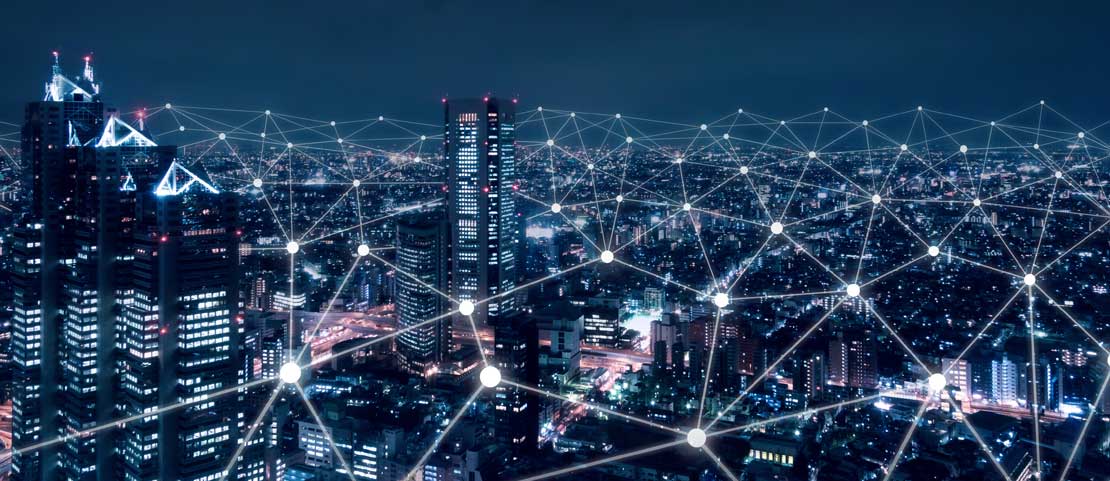
In Conversation With Lumin: Smart Grids Leading The Way To Clean Energy.
Smart grids are taking huge strides across the solar power industry. I spoke to Lumin CEO, Alex Bazhinov, to see what this might mean for the future of clean energy.
Comments.